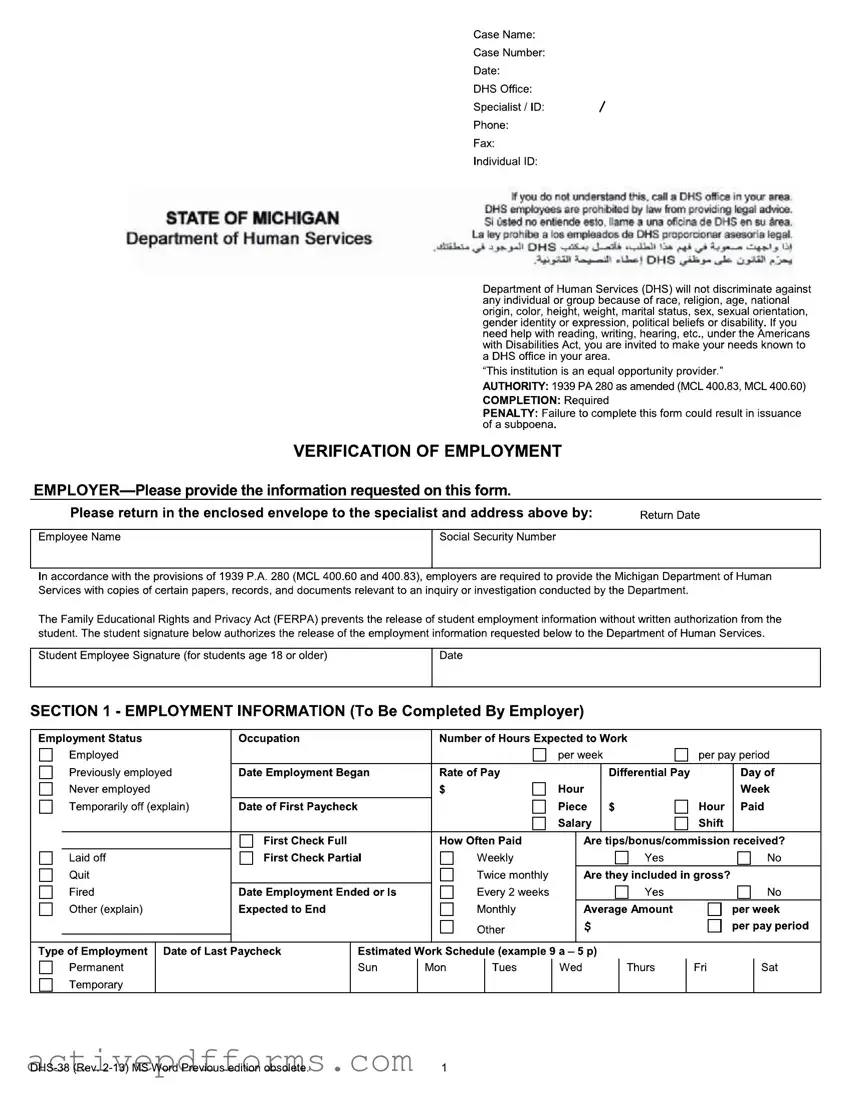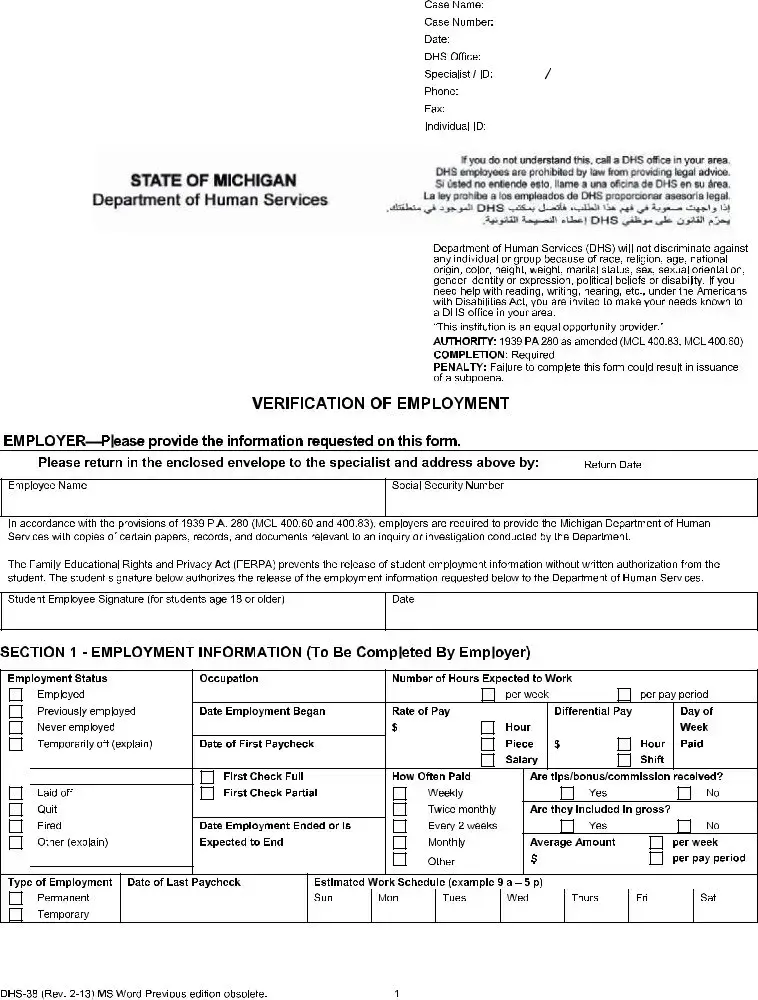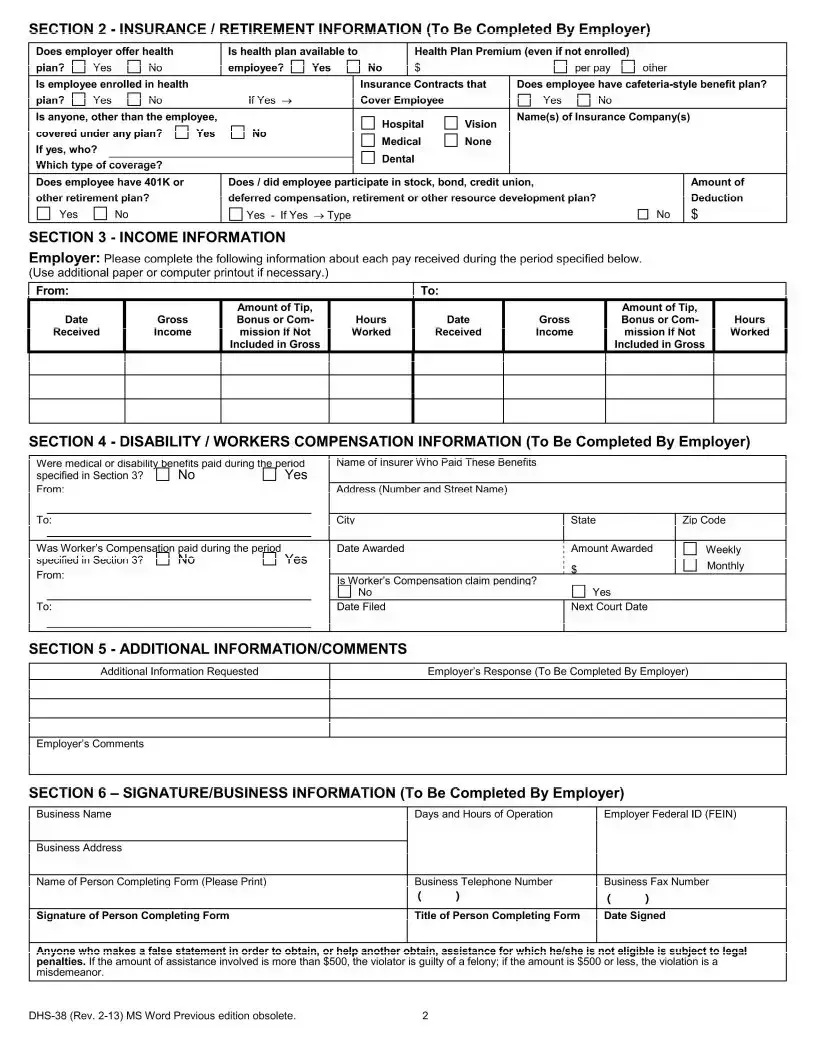In the intricate landscape of employment verification, the DHS-38 form emerges as a pivotal document within the state of Michigan, mandated by law to streamline the collaboration between employers and the Department of Human Services (DHS). Tasked with a broad spectrum of inquiries, from basic employment status and wage details to more nuanced data regarding insurance, retirement plans, and disability benefits, this form serves as a cornerstone for verifying employment and income information. Employers are legally required to furnish this form, filled with comprehensive details concerning an employee's work and compensation, to aid DHS in their varied programs and investigations. The form meticulously balances the necessity of thorough information gathering with privacy mandates—highlighting its adherence to the Family Educational Rights and Privacy Act (FERPA) when dealing with student employees. Moreover, it underscores an inclusive non-discrimination clause, reiterating DHS’s commitment to equality. Through its expansive sections, the DHS-38 not only facilitates a critical data exchange but also enforces accountability, with strict penalties for non-compliance, thereby underscoring the seriousness with which Michigan addresses the integrity of its human service endeavors.


